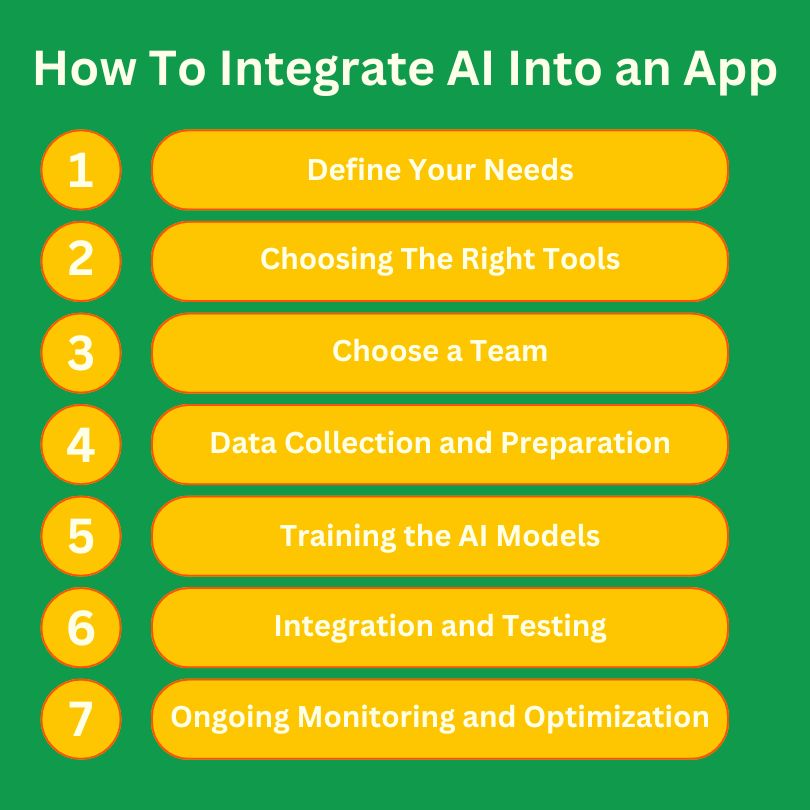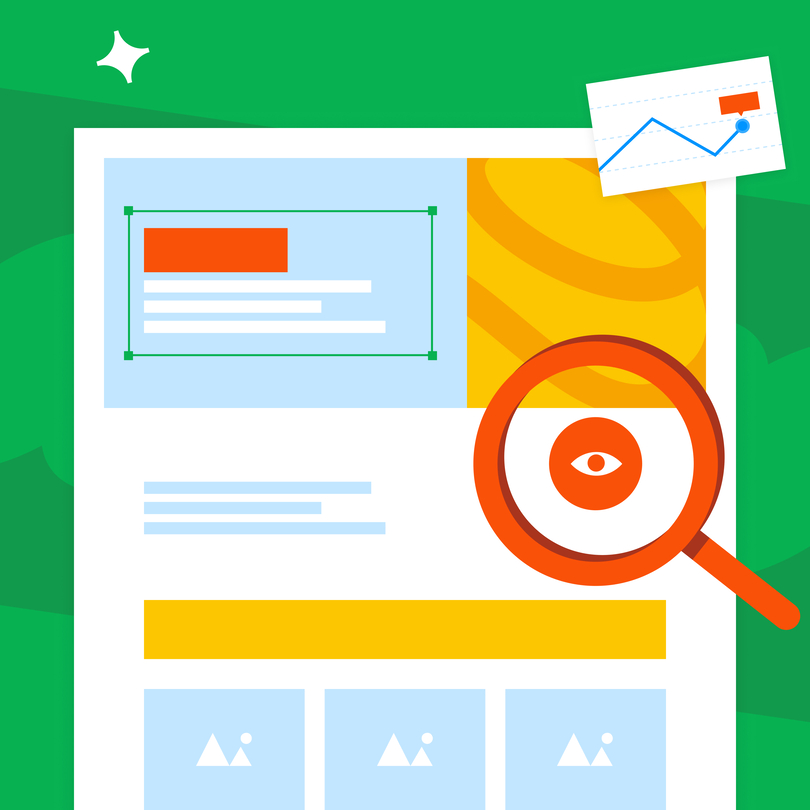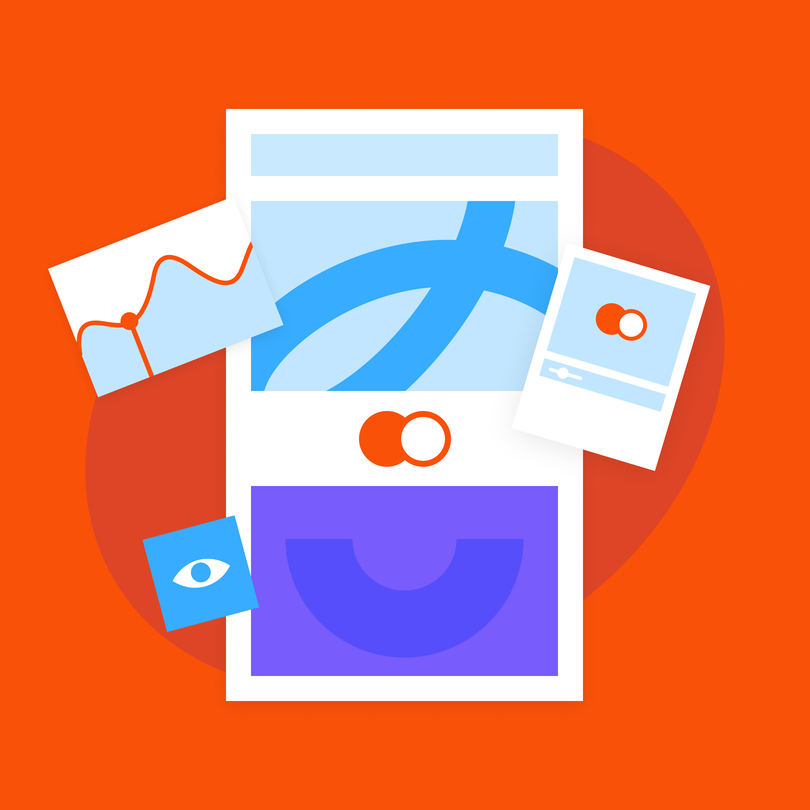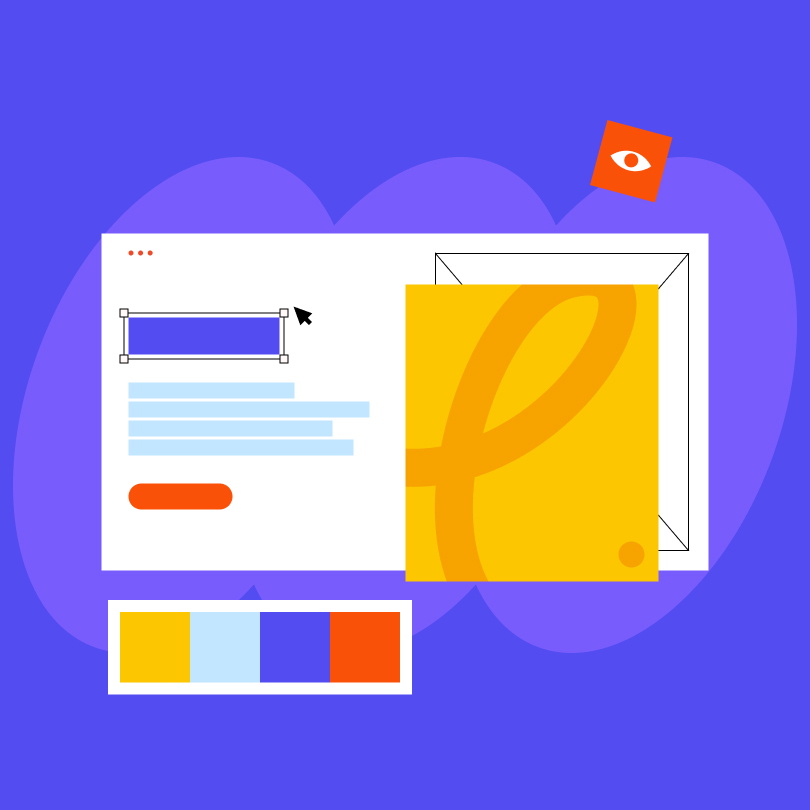It’s safe to say that everything we thought about artificial intelligence changed in November 2022, when the Californian AI research and deployment company, OpenAI, introduced ChatGPT, a virtual assistant and chatbot, the first language model that received international recognition.
The massive success of this sophisticated tool changed the world in several ways. It also showed businesses clever ways for integrating AI technology into their everyday processes, and even in their applications. But how to add AI to your app exactly? When is it necessary? In this article, we uncover the answers to these questions.
How To Integrate AI Into an App: The Fundamentals of AI Integrations
First of all, AI integrations describe those software connections that send data from your app to AI applications and the other way around. The integrations ensure that your app can leverage smooth and reliable AI capabilities like computer vision or natural language processing to execute tasks, actions, and different processes.
AI has become a mainstay in modern web development. They’ve become invaluable tools for web developers and designers to create reliable and functional websites and AI-powered tools have also become a must-have feature on websites, to improve visitor experiences, either in the form of chatbots, or other useful gadgets that leverage the power of artificial intelligence.
Similarly, AI has also made it into app development and the use cases just keep growing. Integrating your applications with AI can help you automate different processes and tasks. For example, it can help you pull data from sales calls, write email responses, and categorize customer tickets quickly. In some cases, you may also be able to get AI integrations as readily available templates. For instance, you can use Google Natural Language together with Google Sheets, to get automated text analytics right on the spot.
Another great example is integrating Telegram with ChatGPT, to get automated bot replies to Telegram messages.
Why Embrace AI?
Should you shrug off artificial intelligence as another tech buzzword that will eventually fade or is it a technology that’s here to stay? According to a McKinsey report from 2023, 79% of their respondents used generative AI in at least one form. While this might not be a convincing figure at first sight, there are several key benefits that you can leverage from using AI in your app development.
- Personalized offers: Data suggests that 91% of consumers are more likely to purchase from brands that memorize their preferences, acknowledge them, and give them personalized recommendations. AI algorithms can track consumer behavior and can help you drive more sales if you are an app-based eCommerce brand.
- Better user retention: AI personalization can help you with more than just personalized offers. It can boost your engagement rates and increase your customer satisfaction.
- Process automation and optimization: Automation is invaluable for businesses that use massive amounts of data or have several mundane processes that need to be carried out daily. Sending out your email newsletters is a great example, as automation will send out the messages for your entire list, and some tools even take care of resending bounced emails.
- More data, smarter decisions: AI also shines when having to analyze massive datasets quickly and give actionable recommendations. Leveraging AI algorithms for better decision-making can be invaluable for your business and can also help your customers as well. If you are in FinTech, AI can be a trusted financial advisor to your clients.
- Cost-efficiency: Workflow automation can also help keep costs optimal. Using AI for product maintenance and customer support can be of immense help. Predictive maintenance can help you avoid catastrophes before they happen, and in customer support, AI can handle simple queries before they can lead to negative user experiences.
How To Integrate AI Into an App
Without a doubt, AI brings a lot of benefits to the table, however, integrating the technology with your current or new software or application may require you or your development partner more than just a bit of tinkering. To leverage the power of AI, you also need to think about using the right tech stack, objective identification, and more.

1. Define Your Needs
You shouldn’t create an AI-powered app just for the sake of having one. What are the specific problems you aim to solve with AI? For example, if you run an eCommerce platform that heavily relies on customer support, using chatbot technology can help you boost response times and free up time for your support team who can then focus more on more complex issues.
On the other hand, if you are in the financial industry, AI can help your users with financial advice, or the technology can help you detect fraudulent activity. Needless to say, the problem you aim to solve will also dictate the next steps, such as opting for the right integration approach, and the necessary technology and tools.
2. Choosing The Right Tools
AI is a mere umbrella term for a list of technologies, such as deep learning, data minions, and machine learning. You must opt for a specific technology once you’ve settled on the issue you want to solve with AI.
- Machine learning: This subset of AI develops and trains algorithms to examine data and uncover patterns. It can be used for uncovering trends, discovering customer preferences, real-time data analysis, behavior prediction, and more.
- NLP or natural language processing: This technology enables machines to grasp and interpret human language. NLP can be used for information extraction, text classification, language modeling, translation, and more.
- Voice and image recognition: As the name suggests, this technology identifies, recognizes, and classifies both images and voice. These can be excellent for security purposes (face and voice recognition), visual product searches, medical imaging and diagnosis, speech-to-text services, and voice-activated controls, for instance.
- Generative AI: This subset of AI tech can help generate new content such as audio, images, or text with the help of prompts and existing data. These can be used in marketing for creating tailored messaging, or other creative purposes, like image generation.
3. Choose a Team
Chances are, you might not have the necessary staff who possess all the required skills (or even free time) to develop a new application with AI features. This means that you will also have to address this issue by either hiring new experts to have the project executed in-house, or you can make the more sensible choice, which is to outsource your development needs to a seasoned agency providing web application development services.
The latter option will enable you to leverage the knowledge of experienced developers without having to hire them and invest in a new development infrastructure. Also, partnering up with an agency will enable you to take advantage of their experiences, recommendations, and expert insights. This will help you to create the best possible version of your new app.
4. Data Collection and Preparation
Data is the bread and butter of AI algorithms. Simply put, the more and better quality data you have, the better your AI-powered features will be.
You will need to determine just how much data you would need. While this is a vague answer, the more the merrier. Internal, external, first-party, second-party, or third-party data, structured or unstructured, can all come in handy to ensure that your AI-powered app has a vast pool of information to pull and learn from.
However, not all data are created equal, meaning that you will also have to prepare the data you have. Quality also matters, as much as quantity, so you should ensure that the data is high quality. Why? Because if you have poor data models, your app’s capabilities will also be subpar.
5. Training the AI Models
Depending on the intricacy of the task and data quality, training and fine-tuning your AI models may be pretty resource-intensive, as training will often require powerful computing capabilities from your systems.
First, you will need to train your model, which means feeding it the data from your sources and allowing it to adjust to data parameters. You aim to allow the model to learn enough from the training data to be able to execute its predefined functions (like generating text, or making predictions).
When the initial training is done, you can then fine-tune the model to improve its efficiency and accuracy.
6. Integration and Testing
Here, the main objective is to ensure that the AI functionalities harmoniously interact with your app’s existing capabilities, working in your and the users’ favor.
Integration will involve setting up your app’s APIs to successfully interact with the AI model. You can opt for signing up with providers for API access, which will include billing details.
Once you’ve done with API integrations, you need to test the app in several scenarios to ensure that it functions as required. This means that you will have to:
- Check all individual components.
- Run integration tests to ensure that every part of the app can work without conflict.
- Execute user acceptance tests to see whether the app meets user expectations and needs.
Regarding testing, you should also pay attention to response times, accuracy, unexpected inputs, and more.
7. Ongoing Monitoring and Optimization
Once you launch the app, your job still isn’t done. You must also monitor your app’s performance and AI functionalities continuously to ensure that everything performs optimally, adapting to changing user or data trends. You should monitor the accuracy of the app’s decisions and predictions, and track the speed of processing, and the overall engagement rate of your app’s AI features.
Over time, you should also use the data gathered from monitoring to improve your AI models. This can mean anything from adjusting the model’s parameters, retraining it with new data, or redesigning specific aspects.
AI and The Future
We can’t really be sure about what trends will drive development forward in five years. One thing’s for sure, however: AI’s capabilities suggest a rather promising software development trajectory.
In this regard, the future is more than likely to hold even more sophisticated models and more refined AI capabilities in applications with better personalization and smarter decision-making. As these models get smarter, developers and even governmental bodies should raise concerns and take action to ensure that AI capabilities are used ethically.
All in all, we can’t know what the future holds. But one thing’s certain – the businesses that want to remain relevant should embrace the latest technological advancements.





